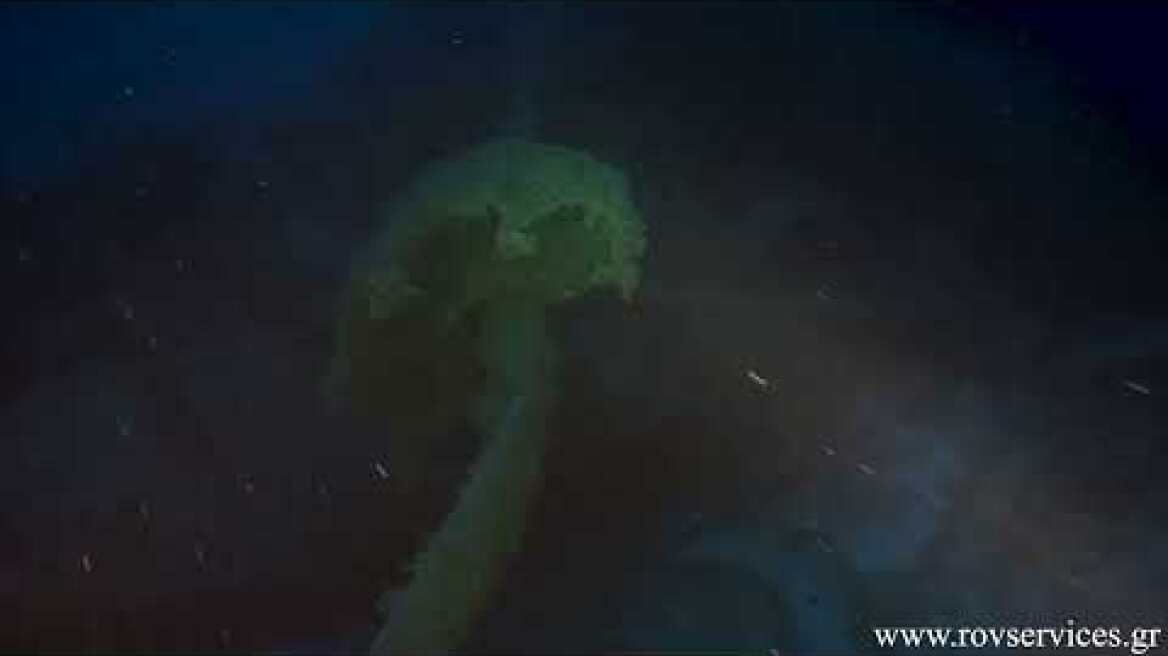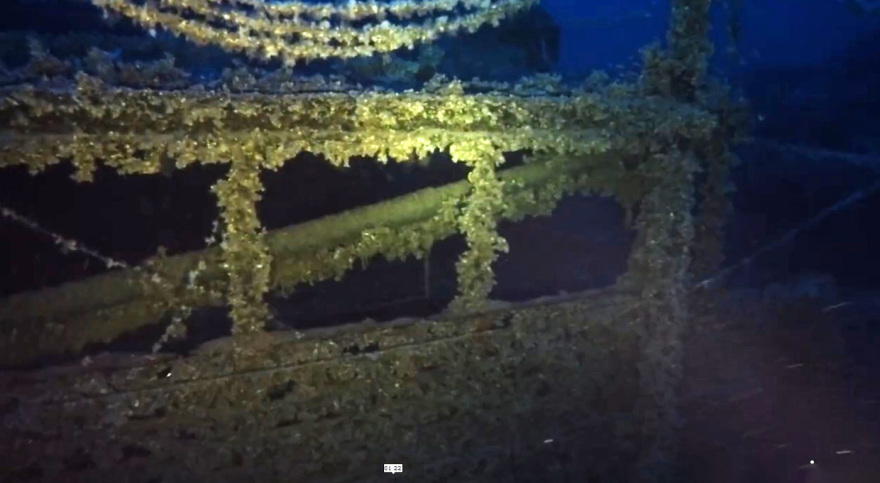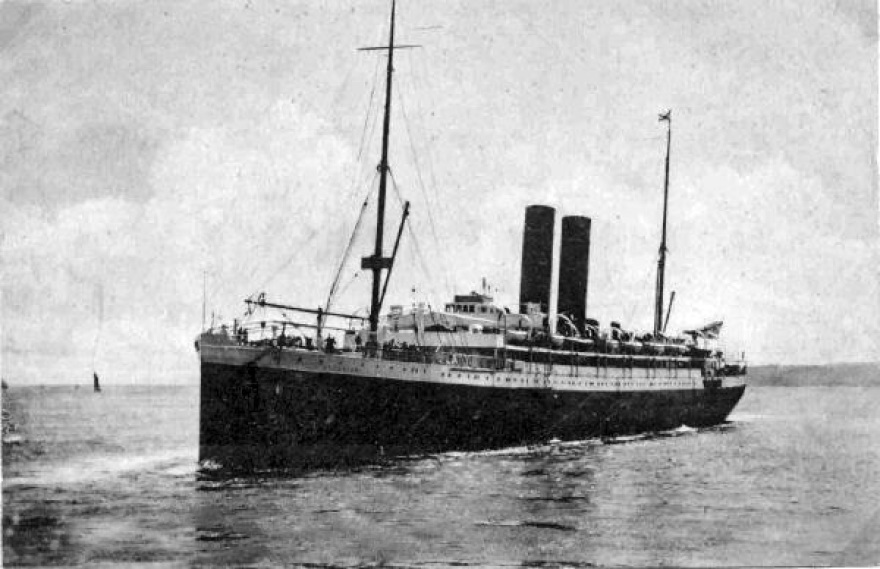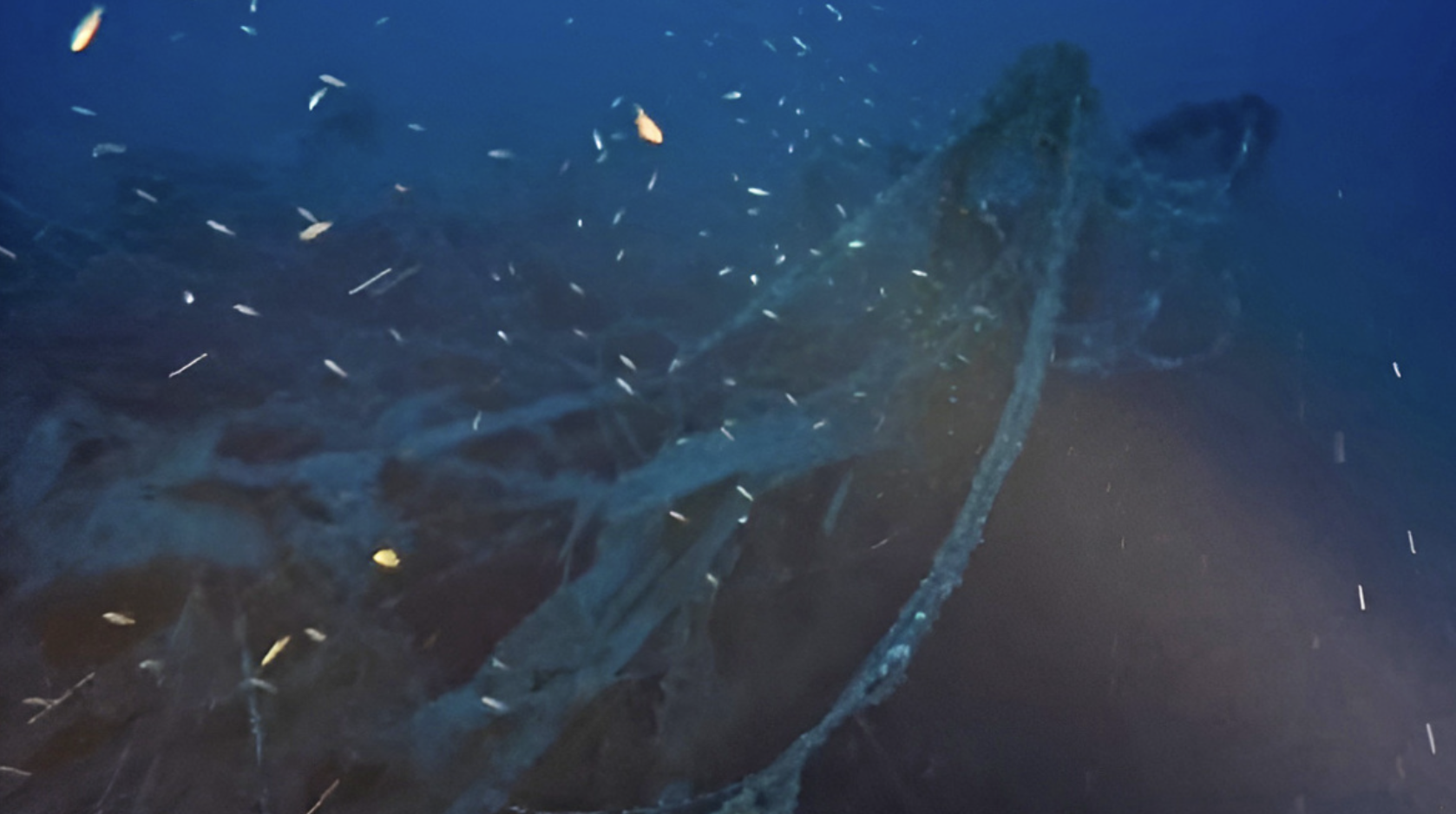The British liner S.S. ARCADIAN, torpedoed by a German submarine and sunk during World War I, taking 279 people with it, was discovered by researcher Kostas Thoctarides and his team southeast of Sifnos at a depth of 163 meters.
“The quality of the primary metals used in the construction of the Arcadian has certainly played a significant role in preserving the wreck to this day. Underwater research shows that initially, the bow of the Arcadian settled on the seabed of the Aegean, resulting in visible deformations of the hull plates. Due to the length of the ship (152.4 m) and the relatively shallow depth of the area (only 163 meters), the bow’s impact helped align the hull with the seabed, making it remain isotropic to this day,” Kostas Thoctarides stated to the Athens News Agency.
The Torpedoing and Sinking
The ARCADIAN had departed from Thessaloniki, heading to Alexandria, Egypt, carrying 1,155 military personnel. During the voyage, the presence of an enemy submarine was detected near Ikaria, so it navigated through the Cyclades to avoid it.
The ARCADIAN sailed at a speed of 13.5 knots, accompanied by the lead ship HMS SENTINEL. On April 15, 1917, at 17:40, the convoy was between Sifnos, Antiparos, Sikinos, and Folegandros. The sea conditions were good, and nothing foretold what was to happen. At 17:44, an explosion shook the ARCADIAN. The German submarine UC-74 had targeted the liner and launched an attack. A torpedo struck the ship on its starboard side between the bridge and the foremast.
Captain Charles L. Willats ordered the engines to stop and sounded the alarm for everyone to move to their muster stations. The crew performed exemplary. Just ten minutes before the torpedo hit, they had completed an abandon ship drill, and most were still on deck. The captain ordered the immediate lowering of lifeboats to evacuate the ARCADIAN. The ship began to sink by the bow, developing a list to the left.
Captain Willats remained on the bridge overseeing the evacuation and the ship’s condition. The military personnel evacuated with discipline and composure. Just five minutes after the explosion, as the bow of the ARCADIAN sank into the Aegean waters, a loud noise was heard, the ship listed suddenly, and the stern lifted. Meanwhile, HMS SENTINEL, about 900 meters ahead, dropped six rafts and rescued 123 survivors. By 20:30, French warships from Milos arrived at the wreck site to continue rescuing survivors clinging to debris, rafts, and boats.
Out of the passengers, 1,058 were saved, while the remaining 279 perished in the Aegean waters. Of these, 34 were crew members, two were civilians, ten were from the Navy, and the rest were from the Army.

The Titanic Survivor Who Also Survived the Arcadian Wreck
For stoker Thomas Threlfall, the experience of being shipwrecked was already known. He had survived another wreck exactly five years earlier, from April 14 to 15, 1912, as crew on the Titanic. Threlfall later stated: “Same day, same month the Titanic sank, but in both cases, I came out alive!”
The Majestic Liner 107 Years Underwater
The search for the S.S. ARCADIAN began with research in British and German archives, gathering crucial information that led to the discovery of the liner in the Aegean seabed. The wreck lies at a depth of 163 meters southeast of Sifnos and is in excellent condition, one of the most impressive wrecks in Greece, remaining intact as if time stopped in 1917.
“The masts have fallen aft and to the left. On the foremast, the lookout post is visible. On the starboard side, there’s a fracture from the torpedo attack. An unusually large concentration of fishing gear, lines, nets, and longlines was observed on the wreck. The underwater visibility in the area is excellent, as in most parts of the Aegean. Currents help clear the water, while marine life on the wreck is relatively sparse. The davits that once held lifeboats now hang with fishing lines and gear. During the sinking, the funnels were detached. The identification and discovery of the wreck were achieved using a Remote Operated Vehicle (ROV),” notes Kostas Thoctarides.
The Identity of the Arcadian
From a liner to a troopship for wartime needs. The ship was built in 1899 at Vickers, Sons & Maxim shipyards in Barrow-in-Furness, England, for the Pacific Steam Navigation Co. It had a gross tonnage of 7,945 tons, measuring 152.4 meters in length and 16.9 meters in width. It featured two propellers and a triple-expansion steam engine, capable of sailing at 14 knots. Initially named ORTONA, it sailed from Britain to Australia in collaboration with Orient Line. With the outbreak of World War I, the ARCADIAN was requisitioned in February 1915 by the British Admiralty to be converted into a troopship.

The Perpetrator: German Submarine UC-74
UC-74 was a UC II-class submarine built in 1916 at Vulcan shipyards in Hamburg. Research in German archives revealed the logbook of UC-74. This submarine had a significant role during WWI, sinking 37 ships, ten of which were Greek. Lieutenant Commander Wilhelm Marschall was its first commander. In the year he served on UC-74, Marschall proved highly effective, sinking 27 vessels of various types.
The submarine’s war diary describes the sinking of the ARCADIAN in detail: “We spotted a large target. To the right of the submarine, a passenger ship approached, escorted by a warship. We observed the passenger ship turning right towards us with the warship ahead, maneuvering continuously. Then, the passenger ship, now on the left, was identified as a large troopship. War was declared, and the crew took battle positions. The submarine approached the target at periscope depth to 500 meters and attacked with a single torpedo. Shortly after, we heard a loud explosion. Immediately, we dived to 40 meters.” When UC-74 resurfaced, it was dark, and the area was illuminated by searchlights and green flares, indicating ongoing rescue operations.

Captain Charles L. Willats – Shipwrecked Three Times
Captain Charles L. Willats, in his 23 years with Royal Mail Line, had been shipwrecked twice before. On November 5, 1915, as captain of the liner PEMBROKESHIRE, he ran aground on a reef in the Canary Islands. Then, on January 7, 1917, he captained the freighter RADNORSHIRE in the South Atlantic when it was sunk by the German auxiliary cruiser MOEWE. The captain and crew were held captive until released in Brazil, where they boarded the troopship DRINA to return to England. However, on March 1, near the British coast, the German submarine UC-65 sank the DRINA. Despite being shipwrecked three times, he survived each ordeal.

Ask me anything
Explore related questions





